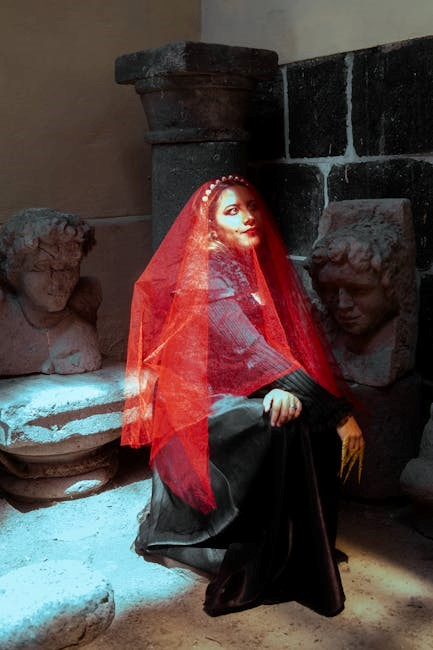Ronald Takaki’s “A Different Mirror” offers a revisionist history of America, exploring multicultural perspectives from colonization to the 1992 Los Angeles riots, challenging Eurocentric narratives.
Overview of the Book
A Different Mirror: A History of Multicultural America by Ronald T. Takaki is a groundbreaking work that reinterprets American history through the lens of multiculturalism. First published in 1993, the book spans from the early colonial period to the 1992 Los Angeles riots, offering a comprehensive narrative that highlights the experiences of diverse groups, including Native Americans, African Americans, Asian Americans, and immigrants from Europe and Latin America. Takaki challenges the traditional Eurocentric perspective, emphasizing the complex interplay of race, ethnicity, and culture in shaping the nation. The book is structured chronologically, blending historical events with personal stories and primary sources to create a vivid and inclusive account. Its 529 pages, including plates, provide a detailed exploration of America’s multicultural identity, making it a seminal work in revisionist history. The book has been widely recognized for its insightful and nuanced portrayal of the American experience.

Author Background: Ronald T. Takaki
Ronald T. Takaki was a renowned American historian and scholar of Ethnic Studies. Born in 1939, he was a professor at the University of California, Berkeley, where he became one of the leading voices in multicultural studies. Takaki’s work focused on uncovering the diverse experiences of racial and ethnic groups in America, challenging the dominant Eurocentric narratives. His writing was deeply influenced by his own background as a third-generation Japanese American, which shaped his perspective on identity and cultural diversity. Takaki authored several influential books, including A Different Mirror, which became a landmark text in revisionist history. His scholarship emphasized the interconnectedness of race, class, and gender, offering a more inclusive understanding of American history. His legacy continues to inspire educators and scholars, particularly in the field of multicultural education.
Key Themes in “A Different Mirror”
A Different Mirror explores the multicultural narrative of American history, emphasizing the role of ethnicity in shaping the nation and challenging the traditional melting pot myth.
The Multicultural Narrative of American History
Ronald Takaki’s A Different Mirror reimagines American history through a multicultural lens, challenging the Eurocentric perspective that has traditionally dominated historical narratives. The book chronicles the experiences of diverse groups, including Native Americans, African Americans, Mexicans, Asians, and European immigrants, weaving their stories into the broader tapestry of American history. By examining the intersections of race, class, and gender, Takaki reveals how these factors have shaped the nation’s development. The narrative begins with the founding of Jamestown in 1607, highlighting the multicultural beginnings of America, and extends to the 1992 Los Angeles riots, showcasing the ongoing struggles and contributions of marginalized communities. This approach not only enriches our understanding of the past but also underscores the importance of inclusivity in shaping America’s future.
The Role of Ethnicity in Shaping America
Ethnicity has played a central role in shaping America’s identity and development, as explored in A Different Mirror. The book highlights how diverse ethnic groups, from Native Americans to European immigrants, have influenced the nation’s cultural, social, and political landscapes. Ethnicity has often been a source of both unity and division, fostering rich cultural exchange while also leading to discrimination and conflict. Takaki examines how the experiences of marginalized groups, such as African Americans and Asian Americans, have been integral to the American story, challenging the notion of a homogeneous society. By exploring the historical struggles and contributions of various ethnic communities, the book underscores the enduring impact of ethnicity on America’s evolution and its ongoing quest for equality and inclusion. This perspective reshapes the traditional narrative, emphasizing the complexity of American identity.
Challenging the Melting Pot Myth
A Different Mirror critiques the traditional “melting pot” narrative, arguing that it oversimplifies the complex dynamics of American cultural identity. Takaki contends that the melting pot metaphor erases the unique experiences of marginalized groups, implying a seamless assimilation that never fully occurred. By examining the historical struggles of Native Americans, African Americans, Asian Americans, and others, the book reveals how the melting pot ideal has often served to exclude and oppress rather than unify. Takaki challenges the notion of a homogeneous American culture, instead emphasizing the persistence of ethnic identities and the ways in which cultural diversity has shaped the nation. This critique is central to the book’s broader project of redefining American history and identity, moving beyond simplistic narratives to embrace the richness of multiculturalism. The melting pot myth is thus exposed as an inadequate framework for understanding America’s past and present.

Historical Context and Coverage
A Different Mirror spans from colonization to the 1992 Los Angeles riots, tracing multicultural experiences and challenging Eurocentric narratives of American history.
From Colonization to the 1992 Los Angeles Riots
A Different Mirror chronicles America’s history from the founding of Jamestown in 1607 to the 1992 Los Angeles riots, highlighting multicultural experiences. It explores the diverse contributions of Native Americans, African Americans, and other groups, challenging the traditional Eurocentric narrative. The book reveals how ethnicity and race shaped the nation’s development, exposing inequalities and prejudices. By examining key events and struggles, Takaki illustrates the complex tapestry of American identity. This comprehensive approach offers a fresh perspective on the country’s past, emphasizing the importance of inclusivity in understanding its history. The text is widely used in educational settings, reflecting its impact on redefining cultural diversity in academic curricula. Its insights remain relevant for understanding modern multicultural dynamics.
The Founding of Jamestown and Multicultural Beginnings
Jamestown, established in 1607, marks the beginning of multicultural America. This settlement brought English settlers into contact with Native Americans, initiating a complex interplay of cultures. The arrival of African laborers further diversified the population, setting the stage for a multifaceted society. Takaki emphasizes how these early interactions laid the groundwork for future multicultural dynamics, challenging the traditional Eurocentric view of American history. By highlighting the diverse origins of Jamestown’s inhabitants and their interactions, Takaki illustrates the intricate tapestry of cultures that shaped the nation from its inception. This perspective underscores the idea that multiculturalism was not a later development but a foundational aspect of American identity.
Impact on Educational Curriculum
A Different Mirror has influenced educational curricula by promoting multicultural perspectives. Universities nationwide have adopted cultural diversity requirements, ensuring a broader understanding of American history and identity. The book’s adaptation for young people, along with teaching guides, facilitates its integration into classrooms, fostering inclusive education and encouraging students to explore the diverse narratives that shape the nation. This shift reflects a growing recognition of the importance of diverse voices in education, aligning with the book’s mission to present a more comprehensive view of American history. By challenging traditional curricula, Takaki’s work has become a vital resource for educators seeking to enrich students’ cultural awareness and historical understanding.
Cultural Diversity Graduation Requirements in Universities
Universities across the U.S., from New Hampshire to Berkeley, have implemented cultural diversity graduation requirements, reflecting the influence of A Different Mirror. These requirements emphasize the importance of understanding multicultural perspectives in American history. By incorporating such courses, institutions aim to broaden students’ awareness of the diverse experiences that have shaped the nation. This shift in educational priorities aligns with Takaki’s vision of presenting a more inclusive narrative of America. The book’s emphasis on the historical contributions of various ethnic groups has inspired educators to redesign curricula, ensuring that students engage with a richer, more comprehensive understanding of the country’s past. This educational reform underscores the growing recognition of diversity as a foundational aspect of American identity. Through these initiatives, universities are fostering a more informed and empathetic student body.
Adaptation for Young People: A Teaching Guide
A Different Mirror for Young People, adapted by Rebecca Stefoff, offers a tailored version of Takaki’s seminal work for younger audiences. This adaptation ensures that the multicultural history of America is accessible to high school students and young readers. The teaching guide, developed by Dr. Russell Binkley, provides educators with tools to integrate the book into curricula, fostering discussions on diversity and inclusion. By simplifying complex historical narratives, the adaptation helps young people understand the diverse experiences that have shaped the nation. This resource is particularly valuable for schools aiming to incorporate more inclusive histories into their programs. The guide also includes activities and questions to encourage critical thinking and engagement with the material, making it a valuable resource for both students and educators. This effort ensures that the next generation gains a broader understanding of America’s multicultural heritage.

Reception and Legacy
A Different Mirror received critical acclaim as a “splendid revisionist history” by Publishers Weekly, influencing educational curricula and fostering multicultural understanding nationwide, much like Howard Zinn’s seminal work.
Critical Acclaim and Scholarly Reviews

A Different Mirror has garnered widespread critical acclaim for its groundbreaking perspective on American history. Scholars and critics alike have praised Ronald Takaki’s meticulous research and his ability to weave diverse voices into a cohesive narrative. Publishers Weekly lauded it as a “splendid revisionist history,” while many have drawn comparisons to Howard Zinn’s A People’s History of the United States for its people-centered approach. The book has been celebrated for challenging the traditional Eurocentric view of America, offering instead a rich tapestry of multicultural experiences. Its impact extends beyond academia, influencing curriculum changes and fostering a deeper understanding of America’s diverse heritage. This acclaim underscores its significance as a seminal work in the field of multicultural studies.
Comparison with Other Revisionist Histories
A Different Mirror stands alongside works like Howard Zinn’s A People’s History of the United States in challenging traditional narratives. While Zinn focuses on class and power, Takaki emphasizes multiculturalism and ethnicity. Both works share a commitment to marginal voices, offering fresh perspectives on American history. Unlike Zinn, however, Takaki dedicates extensive attention to the experiences of Native Americans, African Americans, and Asian Americans. This unique focus sets A Different Mirror apart, providing a more inclusive account of cultural diversity. By integrating these stories, Takaki creates a broader, more nuanced understanding of America’s past, making his work a vital complement to other revisionist histories. His approach has been particularly influential in reshaping educational curricula and public discourse on multiculturalism.
Critiques and Controversies Surrounding the Book
While A Different Mirror has been praised for its groundbreaking perspective, it has also faced criticism. Some scholars argue that Takaki’s focus on multiculturalism sometimes overshadows the complexities of class and economic factors in shaping American history. Others contend that his critique of the melting pot narrative may overlook the ways in which cultural blending has historically occurred. Additionally, the book’s emphasis on minority experiences has led to debates about its representation in educational curricula, with some critics accusing it of promoting a fragmented view of American identity. Despite these critiques, Takaki’s work remains a significant contribution to the field of ethnic studies, fostering essential discussions about diversity and inclusion in historical narratives.
